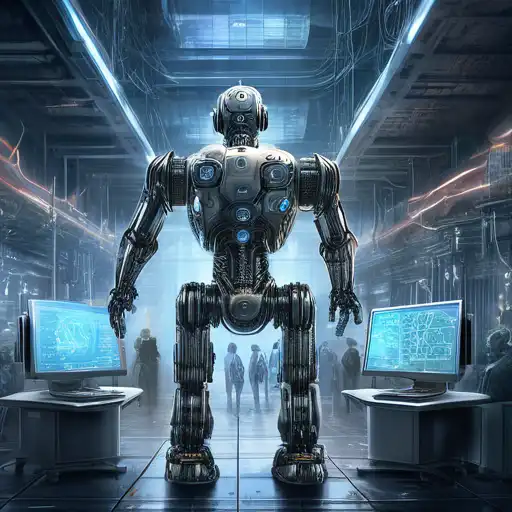Understanding AI and Machine Learning
In the realm of technology, Artificial Intelligence (AI) and Machine Learning (ML) are two of the most discussed topics. While they are often used interchangeably, they represent distinct concepts with unique applications and implications. This article delves into a comparative study of AI and ML, shedding light on their differences, similarities, and how they are shaping the future of technology.
What is Artificial Intelligence?
Artificial Intelligence is a broad field of computer science focused on creating systems capable of performing tasks that typically require human intelligence. These tasks include problem-solving, understanding natural language, recognizing patterns, and making decisions. AI can be categorized into two types: Narrow AI, which is designed for specific tasks, and General AI, which possesses the ability to perform any intellectual task that a human can.
What is Machine Learning?
Machine Learning, a subset of AI, involves the development of algorithms that allow computers to learn from and make predictions or decisions based on data. Unlike traditional programming, where humans explicitly code the behavior, ML systems improve their performance as they are exposed to more data over time. ML is further divided into supervised learning, unsupervised learning, and reinforcement learning.
Key Differences Between AI and Machine Learning
While AI and ML are closely related, there are key differences that set them apart:
- Scope: AI encompasses a wider range of technologies and applications, whereas ML is specifically focused on algorithms that learn from data.
- Functionality: AI systems are designed to simulate human intelligence, while ML systems are designed to learn from data.
- Dependency: ML is dependent on data to learn and improve, whereas AI can operate based on predefined rules without necessarily learning from data.
Applications of AI and Machine Learning
Both AI and ML have transformative applications across various industries. AI is used in autonomous vehicles, smart assistants, and robotics. ML, on the other hand, powers recommendation systems, fraud detection, and predictive analytics. Together, they are driving innovations in healthcare, finance, and entertainment.
The Future of AI and Machine Learning
The future of AI and ML is incredibly promising, with advancements in deep learning, neural networks, and quantum computing paving the way for more sophisticated and efficient systems. As these technologies continue to evolve, they will further blur the lines between human and machine capabilities, opening up new possibilities and challenges.
In conclusion, while AI and Machine Learning are interconnected, they serve different purposes and have distinct applications. Understanding these differences is crucial for anyone looking to leverage these technologies in their field. For more insights into the latest tech trends, explore our tech trends section.
